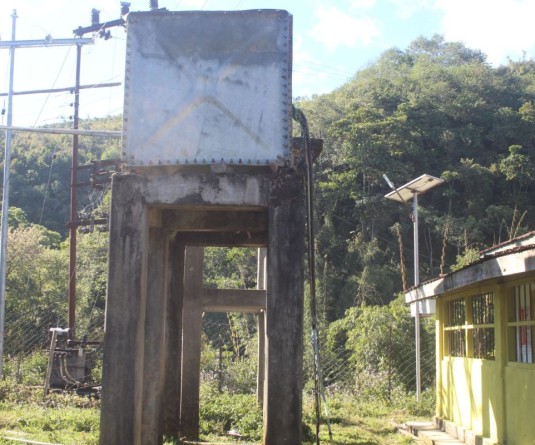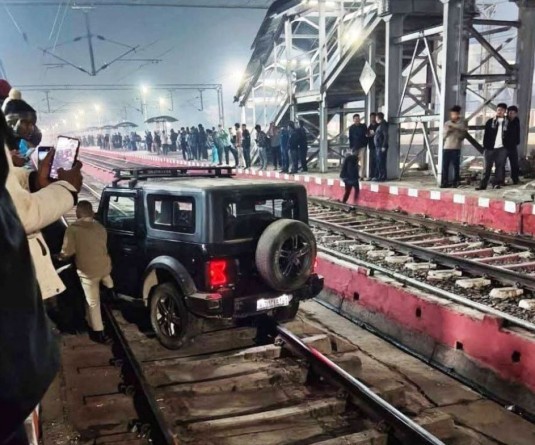
Aheli Moitra
Dimapur | January 30
In 2011, Longsa village in 25 Mongoya assembly constituency of Mokokchung district objected to the electoral roll (e-roll) that had taken nearly a thousand of its voters off it. There seemed no other way for the election department—the provisional figures of the census had thrown up a reduction in population of the village, and the ensuing electoral roll had more voters than people in the village.
“In the 2008 Nagaland general election, we had 4400 voters, who also voted in the Lok Sabha election. In 2011, after our population showed a reduction due to people being temporarily out of the village for education, healthcare or otherwise, our electorate also reduced to 3591, and a further 1000 voters were forcibly removed to suit the census figure,” elaborates a member of the committee constituted by Longsa to file its petition after several representations to the election department were met with no response. “We followed the rules laid out by the census department—to stay where you are when counting happens—but many of our people have lost the right to vote from the village due to this,” he says.
In 2011, the number of voters in the e-roll in Longsa village stood at 3591, while its population at 3160. A worried election department asked Booth Level Officers (BLOs) to slash names from the list.
Some other villages like Khensa, Longjang and Chuchuyimlang—all from Mokokchung—met with a similar fate. Longsa’s petition in the Kohima bench of the Gauhati High Court (GHC) led the court to order a ‘re-census’. The enumeration had to be done in 30 days. Both the census and election departments of Nagaland appealed against this; it was already mid 2012 by then and the summary revision of the e-roll was delayed. The case went to the principal bench of the GHC which upheld the lower court’s decision and ordered a ‘re-census’ in 90 days.
The two departments appealed against this at the Supreme Court, which then stayed the ‘re-census’ order to the relief of the two. By October last year, the summary revision of the e-roll was completed based on the 2011 provisional census. The Nagaland Assembly Election 2013 will proceed without addressing the problem of the missing voters as the Supreme Court is unlikely to settle the case before the election slated for February 23. The case remains sub judice.
Provisional figures of the 2011 census suggest that Longsa’s population declined from 4757 in 2001 to 3160 in 2011. This should surprise as well as not. Between 2001 and 2011, the population of Nagaland itself showed to have declined by 0.47 per cent. In an interview in 2005, Chief Minister Neiphiu Rio admitted that there had been a competitive inflation of population figures in 2001—the actual population of Nagaland in 2001 was six lakh less than the 2001 census figure of 20 lakh.
The 2011 census, expected to have been conducted under strict eyes, found the state’s population to be 19.81 lakh. If the total electorate of Nagaland consisted of 13,00,507 voters in 2008, it has reduced to 11,81,731 in 2013.
The census is closely connected to the election. As per a “thumb rule” (for the sake of comparison, not statutory) the e-roll has to reflect 60 per cent of the population asserted by the census. The census is a head count of people in the State while the e-roll reflects voters, many of whom come home to vote. While the census is conducted once every 10 years, and is a head count of whoever is wherever in the State, the e-roll is consistently updated, except during the election period. The difficulty is to determine, from among the 1,18,776 dropped voters, if proxy voters have been removed during the revision of the e-roll, or genuine. Statistics don’t say.
“The Photo Electoral Roll (PER) could have helped figure out the genuine voters from the duplicate ones but there are discrepancies in the PER. There was a mismatch of photos and names in many cases. Since we have been strictly asked to cut down the e-roll to at least 70% of the census figure, we had to take names of genuine voters out of the list who wanted to vote from their village but we cannot ensure yet that those voting are all genuine,” says a slightly exasperated election officer of the State, adding that in smaller constituencies, this problem is easier solved. “Nonetheless, we come under pressure from our seniors and under threat from the villagers,” she laments.
People who were in cities around India or Nagaland at the time of the census were not counted in their villages, only to find their names struck off the e-roll come election. This created considerable anger.
The election office in Nagaland, in order to update the Photo Electoral Roll, sent notices to those whose photos were missing from the roll or in case of a mismatch. This was done through the political parties and BLOs. If the voter concerned responded within a week, their photos were inserted, or their names deleted. Some genuine voters, either out of station or otherwise, lost out. Though the Elector’s Photo Identity Card (EPIC) will not be issued to voters this year, clarified Chief Electoral Officer J. Alam, the election office will tackle proxy voting through the photo voter ID slips that follow the same format as EPIC.
If this will help at the time of polls cannot be determined yet. For now, for instance, a village in Mokokchung’s Mongoya assembly constituency claims that a man who lives in the village did not make it to the e-roll but his son who works in the army, elsewhere in the state, did. Statistics don’t show this aberration and discrepancy in PERs get the benefit of doubt.
Added to this burden is the manipulation of data. For years, data has been manipulated in Nagaland by village authority, in connivance with state bureaucrats, to boost numbers in order to attract central schemes. That political will allows this to go on is clear; better numbers mean easier manipulation during election. Better numbers will affect any future delimitation. To correct this will take a number of more years.
“We should look at this matter through Article 371 (a) perhaps. People might live elsewhere, but they feel belonged to the village they come from. Casting a vote from the village means gaining a right to decisions made there,” asserts Hekali Zhimomi, much acclaimed director of census 2011. “Though we can correlate statistics from the biometric exercise, socio economic census or the national population register to arrive at final numbers, it is difficult to suggest that the whole population has been included in any exercise. Now, if the census affects the e-roll, people will hike the former giving way to ill-informed policies made on ill-informed data. It will have the same effect on elections. The two exercises (census and e-roll) could perhaps be done separately,” she suggests.
Indeed. In places like Nagaland, with its limited opportunities in rural areas but attraction to roots, conjoined statistics cannot provide a basis for drawing up such lists. A separation, or lighter reliance of one on the other, could save both policy initiatives and democratic elections from manufactured result.






